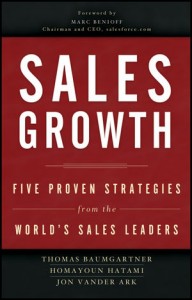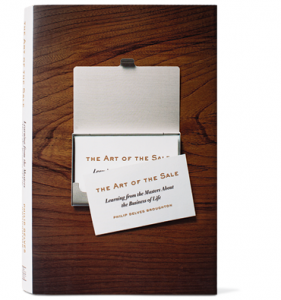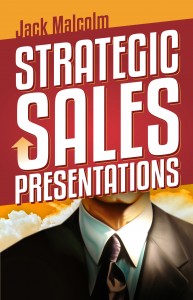Good ideas, like good products, rarely sell themselves. Someone needs to present them in the right way to the right people at the right time, and the three people mentioned in the title above have all had important and useful things to say about how to do that.
In my new book, Strategic Sales Presentations, I’ve made it a point to search for the best ideas from history, science and business and combine them into a unique and powerful approach to strategically sell ideas to high-level decision makers. It’s a skill that will propel your career, regardless of whether you’re officially in sales or just want to sell your ideas to others.
Aristotle was the original—and still the best—presentations trainer in history. Classical Athens was a direct democracy, which meant that if you wanted to get something done, or defend yourself from a lawsuit, you had to speak directly to an assembly of citizens. There were no lawyers, lobbyists of PowerPoint; it was just you and your eloquence facing an audience as large as 10,000 strong, so it was important to know how to get attention and sway an audience.
Fortunately in those days you could turn to one of the first presentations trainers. Aristotle wrote the best training manual for speakers—The Rhetoric. His major contribution, which still applies today, is the proper use of three principal avenues of persuasion, logos, pathos, and ethos. He realized that the persuasiveness is a function of both the message and the messenger. The strength of the message depends on appealing to the listeners’ hearts and minds through logic[1] and emotional connection, and the credibility of the messenger is earned by who they are and what they do. In the book you will learn how to choose the right mix of solid evidence, present it compellingly and engagingly, while personally conveying executive presence and credibility.
Fast forward a couple of millennia, and we can use modern science to further refine some of Aristotle’s ideas. Daniel Kahneman, the only psychologist to ever win the Nobel Prize in economics, teased out the complex relationship between two main modes of thinking that audience members apply when listening to a presentation. System 2 is the slow, logical deliberative process that we all admire as the ideal of business decision-making, and System 1 is the rapid, intuitive and unconscious undercurrent of thought that exerts a powerful and sometimes overriding influence on our real-life decisions. Executive decision makers try to be exceedingly rational in making important business decisions, but even they can be influenced by how choices are framed, for example. Even they use shortcuts when the choices become too difficult. For example, Kahneman’s substitution principle states that when a question is difficult to answer (e.g. will this multi-million dollar investment return an acceptable ROI?), they will frequently substitute an easier question (e.g. do I trust this person who is telling me it will?).
Although history and science have a lot to teach us about effective presentations, no one in business will be really convinced until they see how successful business leaders embody the ideas in the book. Jack Welch and Steve Jobs are certainly on anyone’s short list of greatest business leaders of the past fifty years. They teach us that regardless of how strong your solution is, or how prestigious the company you represent, your performance during those critical moments in front of some of the toughest audiences in the world can make a big difference. Their regimen for preparing for important presentations should teach us and inspire us to put in the same painstaking and relentless effort and attention to detail they do.
Besides these important teachers, the book also contains ideas and advice from some people that I consider even more important. A lot of senior executives that I’ve had the privilege of working with have also made valuable contributions to Strategic Sales Presentations, graciously consenting to be interviewed and pass on their perspective. (Although I suspect some of them did it out of self-interest—because they’re tired of sitting through boring, mistake-filled presentations.)
The book closes with a reminder that greatness as a presenter is within your reach, if you’re willing to put in the work. Because he started it, Aristotle also gets the last word in the book: “We are what repeatedly do. Excellence, then, is not an act but a habit.”
[1] Since he also wrote the first book on logic, I guess you could say he was a full-service training provider.
 This week’s book recommendation is Sales Growth: Five Proven Strategies from the World’s Sales Leaders
This week’s book recommendation is Sales Growth: Five Proven Strategies from the World’s Sales Leaders, by McKinsey and Company partners Thomas Baumgartner, Homayoun Hatami and Jon Vander Ark.
With a few exceptions, you may not find a lot of jaw-dropping revelations in the book, but it’s well worth reading for the three important services it provides for sales leaders and for the profession of sales:
First, it provides a template of best practices being used by some top sales organizations. They interviewed 120 sales executives from 100 large companies in 10 industry sectors that have “significantly outperformed their peers”. Although this is far short of gold standard for research methods, it’s far better than many similar sales books (and business books in general) that claim to have found the secrets to success, so their prescriptions are worth reading. The five strategies are:
- Find growth before your competitors do
- Sell the way your customers want
- Soup up your sales engine
- Focus on your people
- Lead sales growth
Each strategy is further broken down into specific practices, and support for their success is provided statistically and anecdotally. They are summarized in a table at the end of the book which compares “good” to “great” practices; in my opinion, the eight pages from 207-214 are more than worth the price of the book and should be taped up in the offices of every sales executive. While few of the strategies will be a revelation to any sales professional, I’d venture to guess that no one is firing on all cylinders on more than one or two.
Second, the book reinforces a growing and welcome trend toward moving sales from an art to a science, by putting data at the heart of it. If we want sales to be more professional and a more respected aspect of business, we’ve got to become more data-driven. In fact, one of the relatively new topics covered in the book is the use of Big Data to support several of the five strategies, and we’re going to see much more about this in the near future. There are several good examples of companies using it to look beyond averages to identify opportunities at a much more granular level, to gain insights from social media, an—most importantly—to provide actionable insights to individual salespeople. As the data crunchers get better at doing the latter, you’re going to see much more demand for it from the field.
Finally, if you’ve ever had the frustrating experience of vainly trying to get your message across to top management, only to have them jump on it when a prestigious consultant says it, you will appreciate the third service provided by Sales Growth. It’s hard to have a more prestigious mouthpiece than McKinsey in your corner. So, if you’re a sales leader and have been trying to get more resources or attention for some of your sales initiatives, make sure a copy of this book finds its way to your executive suite.
 When I first learned about The Art of the Sale last Friday, I knew I had to read it. I downloaded it immediately to my Kindle and finished it on Saturday morning somewhere between California and Florida. It’s that good.
When I first learned about The Art of the Sale last Friday, I knew I had to read it. I downloaded it immediately to my Kindle and finished it on Saturday morning somewhere between California and Florida. It’s that good.
There are three key messages in this book:
The overlooked importance of selling in business and life
The book is useful for sales professionals and non-salespeople alike. I wish everyone in business who is not in sales would read this book, because it explains why nothing in business would happen without the special talents, tenacity and hard work of salespeople. Business is fundamentally about two things: a) producing goods and services and b) selling them. Guess which one of those two is almost never taught in the typical MBA program? “All over the world, from the most basic to the most advanced economies, selling is the horse that pulls the cart of business.”
In spite of this, “Many supposedly well-educated people in the business world are clueless about one of its most vital functions, the means by which you actually generate revenue. The absence of knowledge about sales has opened a class division between salespeople and the rest of business.” If you want to contribute to closing this class division, give copies of this book to your leadership team.
And it’s not just business; in life, you are always selling or being sold to. Unless you’re a hermit, most of what you do in life has to be done through others, and selling is the vehicle of interpersonal relationships.
Examining the dilemmas and tradeoffs of selling
Broughton also helps to put into perspective and clear up some misconceptions about the motivation and integrity of those who sell for a living. Of course there are dishonest and pushy salespeople, and there are those who see customers only as instruments of their own commissions. The same could be said for any other profession. Broughton examines the balance and sometime contradiction between trying to sell a product and being paid to sell it.
Selling is neutral; intention makes the difference. When you sincerely believe that what you are selling will improve the life of the buyer in some way, there is nothing wrong with trying hard to sell them on it. In the end, it’s much easier to be really good at something when it aligns with your values and your sense of meaning, and as Broughton tells us, “…the best salespeople see themselves as the means by which customers achieve their purpose.”
Portraying the qualities of great salespeople
If you’ve been in sales for any length of time you won’t learn anything new in this book, but you will be inspired and recharged by the stories of some remarkable individuals who portray the great virtues that all of us could use more of: optimism, resilience, lifelong learning, and work ethic. When you read about the pace kept by Memo, the Mexican immigrant who has created a successful construction business, you realize that you don’t work near as hard as you could. Majid in Tangier reminds you about submerging your ego, keeping quiet and learning. Although I’m not sure what its lesson is, the story of Ted Turner’s pitch to the New York advertising agency is worth the price of the book. It’s not a story I can repeat on a PG-rated blog, so you’ll have to buy the book.
The common thread in most of these stories is that selling is the “great leveler”; when you can sell, when you can apply these virtues in sufficient quantities, you can make what you want out of your life.
Ditch the Pseudo-Science
The book does contain one annoying flaw. The science parts feel as if they have been bolted on to please a marketing manager; whenever it seeks to inject science into the discussion, it’s forced, superficial and inaccurate. For example, he tries to explain one salesperson’s success using a technical explanation involving fluid intelligence and working memory that mostly points out ignorance of what those terms really mean. In another chapter, he throws in a few pages about the evolution of cooperation and altruism, and tries to connect it to the use of Salesforce.com. (May I just don’t have the fluid intelligence to understand the connection.)
Despite that last complaint, I strongly recommend this book. If you’re in sales, you will want to read it; if you’re not, you need to read it.




